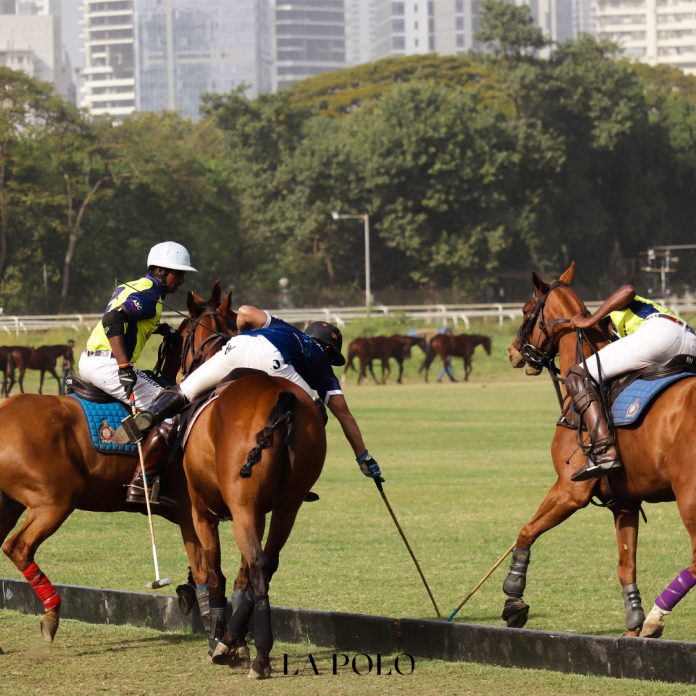SHARIAH HARRIS AT CORNELL UNIVERSITY’S POLO CLUB
The Cornell University’s Polo Club was founded in the fall of 1936, but the sport itself traces its history back to the early 1920s when it was introduced as part of the Reserve Officers’ Training Corps (ROTC) training program. Until 2015, Cornell was the only polo team in the US to be a full Varsity team. It’s a vibrant club that has continued to ignite the spark of passion among young polo enthusiasts.
A number of fresh intakes at Cornell aspire to be a part of the prestigious club. Shariah Harris is doing an animal science major, and has a polo skillset so rare that she had been considered as being the best among, not just the women’s intercollegiate circles, but in all of the United States. Even before Harris played at the varsity level she had a string of accolades attached to her name. In 2016, as a senior in high school, Harris was named the US Polo Association’s National Interscholastic Player of the Year. About a year later, she was competing at the 2017 Silver Cup tournament.

Harris grew up in Philadelphia, in a single income household and entering a sport dominated by wealthy, white males wasn’t a natural choice. Shariah mentions she accidentally chanced upon Polo, after she and her mother took a wrong turn in the Fairmount Park neighbourhood, landing them on the doorstep of Philadelphia’s Work to Ride program. Work to Ride was founded in the early 1990s to promote social development among low-income youths through horsemanship and equine sports. Besides, the programme also provided after-school training tutoring to help with studies and assistance with college applications to participants. Harris’ involvement with Work to Ride heralded her into the world of Polo, giving her the opportunity to compete in tournaments across the country. Harris went to make history as the first black woman to ride in the US Polo’s highest league.
At Cornell, her ability to take on the game with finesse has set her apart. Cornell Coach BrandenVan Loo attests to Shariah’s prowess in the sport, “Shariah is one of the top 10 inter-collegiate players, and she’s right there as one of the top 10 women’s players in the country overall, both in the arena and on grass,” he says.
She hopes to break down more barriers and encourage a greater number of black women to enter the sport of Polo.
GEORGE MARTIN AT STANFORD POLO CLUB
Stanford Polo Club is among the most prestigious in the university polo circuits. The Polo Club helps Stanford accomplish its goals of delivering a thoroughly solid education by allowing students to master the art of riding and polo, as well as horse care and barn management.
Stanford Polo team captain Christian George Martin says: “I walked onto the Stanford team my freshman year of college, three years ago. In order to improve both my riding and my game, I took my sophomore fall off from Stanford and groomed at the New Orleans Polo Club in Louisiana. Returning after the pandemic, my teammates and I have thrown everything we have into learning to play and win together. Most of us are still only in our third year of polo, we have come a long way and are excited by the prospect of two more years of learning to play as a team.”

“Polo is much more a game of learning to compensate and correct for things that do not go to plan, as opposed to mastering and perfecting every execution. There are simply too many variables. For me, it is that ordering of chaos that makes the sport so attractive. Having to maintain a cool head, adapting and compensating in such a high energy and intensity environment is such an incredible training for life outside of the sport,” says Martin.
Polo is a taxing sport. Martin mentions how he and the team balance the two. “Having to balance our studies with practice and horse care is one of the toughest and most defining features of the Stanford Polo Club experience. Being a team that prides itself on scholarship, we keep each other accountable academically as well as athletically,” says Martin. He emphasizes the importance of camaraderie. “Our team culture is crucial here, as we both have to be flexible with each other, sometimes having to catch and tack a horse for a teammate finishing an exam, while also recognizing that we all have to pull our weight or the workload becomes crushing,” says Martin.

Universities are bridging the gap between students and polo by propelling more students towards the sport. Martin says: “We work very hard to promote polo at Stanford. Some of our best players and coaches picked up polo at Stanford. We are fortunate to have a well-funded program as well as a generous alumni network which keeps player fees relatively low and creates lots of financial aid opportunities.”
As we know horses are proud creatures, and building their trust requires skill. “One of the unique facets of Stanford’s polo program is that horse care falls almost entirely under the purview of students. When a horse gets kicked in the pasture, it is members of our team who are out cleaning and bandaging the cut. Rain or shine, every single day of the year, our members are out caring for, or exercising our horses. This builds an incredible relationship between students and horses,” says Martin.






